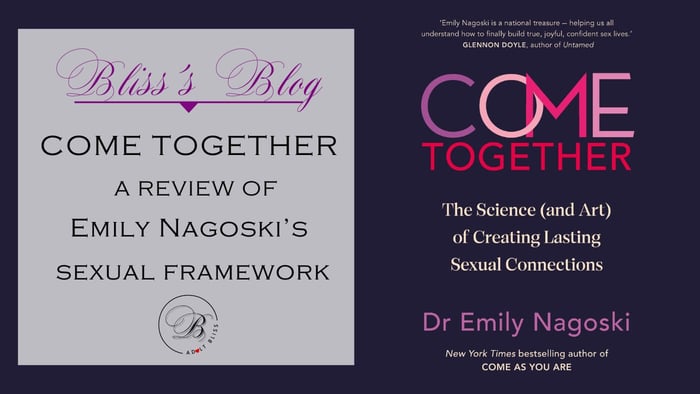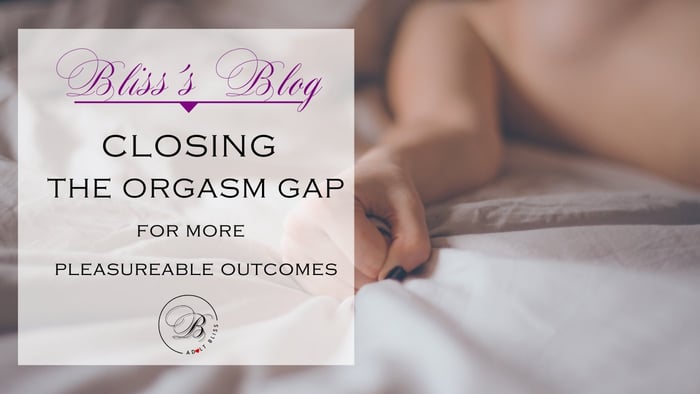
Come Together: A Review of Emily Nagoski's Sexual Framework
Jump To Section
'Come Together: The Science (and Art!) of Creating Lasting Sexual Connections'
| Emily Nagoski | RRP: $36.99 | Penguin Random House |
The sequel To Emily Nagoski's 2015 sexual self help manual for women 'Come As You Are', 'Come Together' focuses on how couples can expand and enrich their sexual connections, and it's just as suited to happy pairs looking to broaden their horizons as it is to those in the midst of low points.
What Is Come Together About?
Why We Sometimes Don't Feel Desire
As Nagoski says (she's quite candid about her own sexual journey with her current partner), following the tour to promote 'Come As You Are', she wasn't the least bit interested in sex, and – along with millions of others who still feel they had a great emotional connection with their significant others – wondered if there was something wrong with her. Why didn't she want sex?
Come Together is Nagoski's attempt to answer, on behalf of herself and anyone else who's faced the same conundrum for myriad reasons.
Womanizer Vibe

$209.95
Noiseless vibrator offering a new kind of sensation with UltraWave Vibration: combining low-frequency, rumbly vibrations with 10 powerful, harmonic resonances. Enjoy a smooth, enriched sensation...… read more
The Emotional Floorplan: Understanding the Path to Desire
It's partly based on a theoretical framework she's come up with in her work as a wellness and sexual health educator.
How Emotions Guide Sexual Response
The trick is to think of your sexual response as a house, each room representing emotional states from comfort and safety to rage, anxiety, fun and a host of others. And just like in a real house where you can only get to certain rooms through other areas, Nagoski encourages you to think of the path to being turned on and wanting your partner the same way.

The Role of Difficult Emotions
You might only get to feeling sexy through feeling playful, or from a sense of friendship or acceptance with your partner. You might have to go through anger or grief to get to those precursor states, which means you often have to face difficult truths or memories on the path. Maybe you just have to tell or read jokes with your partner and laughter gets you there.
The whole "emotional floorplan" idea makes sense and it's indeed a pretty good method of practical work to undertake in order to reach the peak of ecstasy you hope for.
Revolutionary Ideas: Putting Pleasure at the Centre
If it all hews a bit too close to mood boards, affirmations and other slightly new age methodologies to improve yourself and your love life, Nagoski has plenty of other perfectly sensible and quite revolutionary ideas you can execute simply by keeping them in mind when you next think or talk about your erotic life with your partner. Among the most powerful is the idea of considering pleasure, not desire, to be the centre of your sexual experience.
Forget Spontaneous Desire
After lives full of conditioning by Hollywood, fairy tales and porn we mistakenly believe spontaneous desire for our partner should be a reflex bought on as easily as sneezing after sniffing pepper. But as anyone who's middle aged or beyond, has kids, a stressful job, money problems or desire discrepancy knows (ie all of us), we don't just melt into a puddle of lust at a single look from our partner any more.
Choose Pleasure Over Performance
Nagoski understands that fully too but goes even deeper, exhorting us to put both those expectations and the worry we have about them aside altogether and focus instead of the pleasure we give each other when we decide, even plan, to have sex, not the seemingly-missing heat of wanting to.
It's a beautiful idea because it applies regardless of whether you're a twenty-something in peak physical condition, someone living with a challenging disability, or anyone feeling the inevitable slowdown in interest and staying power that comes with age.

Why Come Together Stands Out
Written with Warmth and Relatability
'Come Together' is written in a convivial, conversational style and every time you want to roll your eyes and say 'easy for her to say', Nagoski is a step ahead of you, explaining how she's been there too but making a stronger case for what she's saying.
No Statistics, No Pressure
Most refreshingly of all, there's absolutely nothing about how often the average couple has sex, how many orgasms they have per session, what they do to get there, or any other statistical reporting.
The Core Message: You Are Good Enough
As Nagoski says from the outset, all you'll do is compare yourself to others and find yourself wanting (or, just as bad, ashamed at your abnormal freakishness). As she takes pains to say repeatedly, your experience and your truth are normal. You're good enough just as you are, you're lovable and by birthright of being a human being, you have the means to enjoy (and deserve) a satisfying erotic life.
FAQs
What is Emily Nagoski’s “emotional floorplan” theory?
It’s a framework where different emotions are viewed as rooms in a house. To reach sexual desire, you might need to pass through feelings like comfort, playfulness, grief, or even anger first.
Is Come Together only for couples with sexual problems?
No. It’s equally valuable for couples who feel satisfied but want to deepen intimacy, expand their experiences, or better understand their emotional pathways to desire.
Does Come Together talk about how often you should have sex?
No. Nagoski deliberately avoids statistical comparisons about frequency or number of orgasms. The focus is on personal satisfaction, not performance benchmarks.
How does Come Together differ from Come As You Are?
Come As You Are focuses on understanding individual sexuality, especially for women. Come Together builds on that, offering a guide for couples to nurture their connection and navigate changes in desire together.
Can the ideas in Come Together help people with disabilities or aging-related changes in desire?
Absolutely. Nagoski’s focus on planned pleasure over spontaneous desire makes her advice accessible for anyone, regardless of physical condition, life stage, or relationship status.
Is pleasure really more important than spontaneous sexual desire?
According to Nagoski, yes. Focusing on giving and receiving pleasure, rather than chasing automatic desire, leads to deeper satisfaction and a more resilient sexual connection.










